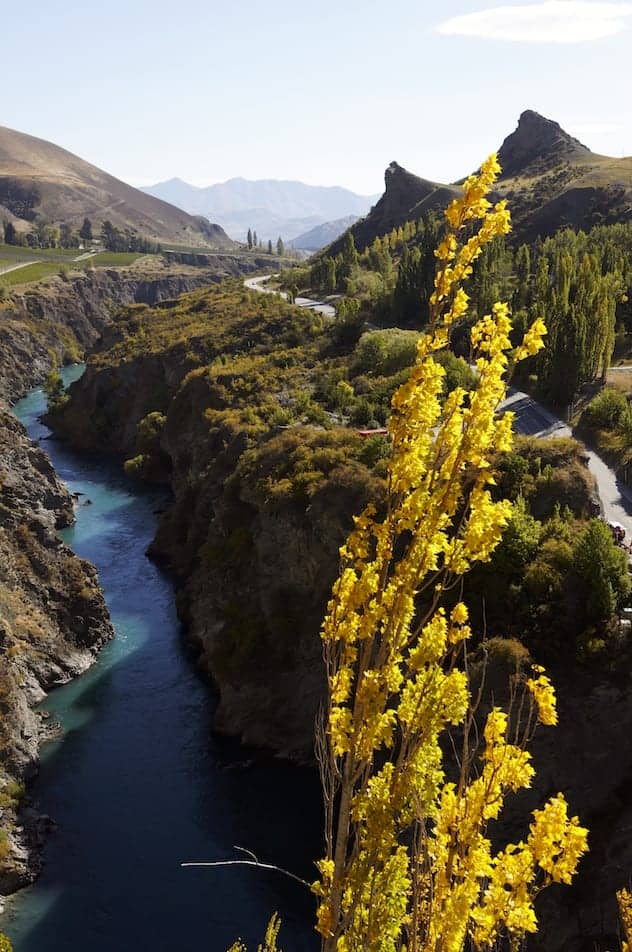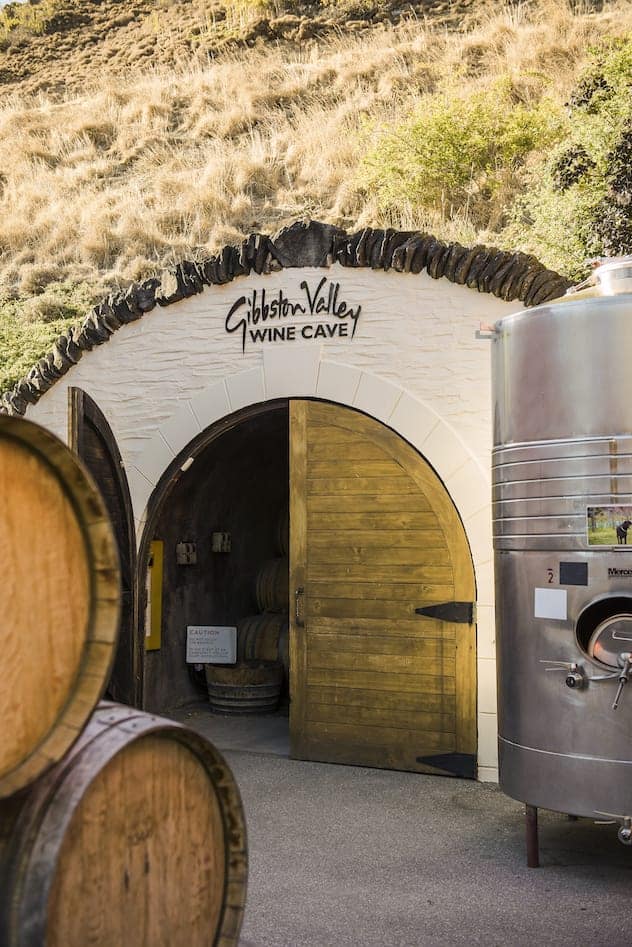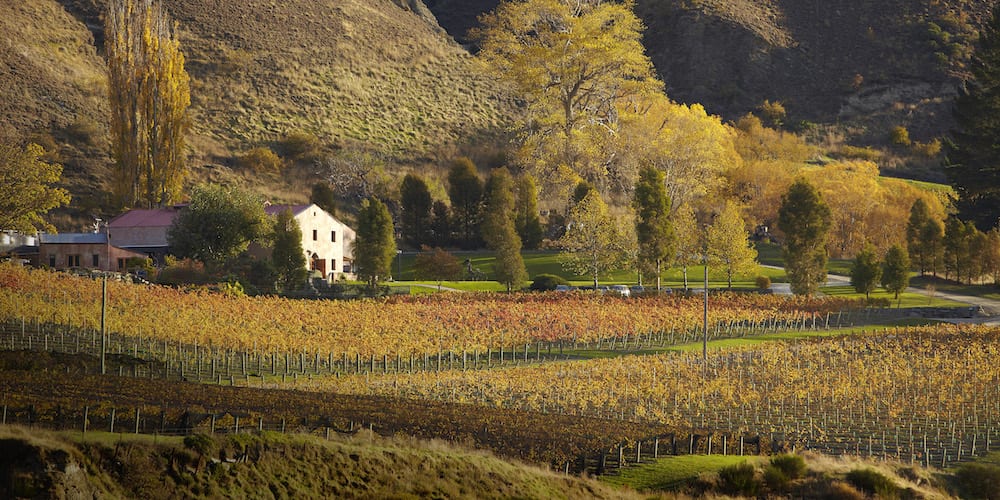Just about anyone who’s ever watched television in New Zealand over the last 20 years will recognise the two elderly South Island farmers musing about their aged cheeses and agreeing that, “Good things take time”.
The same could be said for Central Otago wine. It was on 2 May, 1895, that Romeo Bragato – an Italian expert imported to assess a potential industry – told the Otago Chamber of Commerce that he was astonished how well Burgundy-style grapes grew here. “There’s no country on the face of the earth,” he proclaimed, “which could produce better.” It only took 100 years before he was proved right.
Making wine in Central Otago has been politely described as “not for the faint-hearted”. Bragato might have added that it would take true grit and a real ‘can-do’ attitude to produce world-class wines from the mountain valleys of some of the planet’s most southerly vineyards.
Besides, the province was doing very nicely, thank you, from the land. Sheep, gold, cattle and stone fruit had made Otago, and its provincial capital of Dunedin, the powerhouse of the New Zealand economy for almost a century before a handful of wine pioneers entered the picture in the early 1980s.
Not that they were the first to nurture vines in the province. John Desire Feraud – a French goldminer with winemaking in his blood and money from the goldfields lining his pocket – set up Monte Christo winery near Clyde in 1863. The region won a gold medal for its burgundy in 1881.
Realising that the high country enjoyed a near-continental climate of hot days, cool nights and not a lot of rain, Alan Brady bought land in Gibbston in the mid-1970s, with the belief that the temperamental pinot noir grape would thrive there – despite being told that it was “too cold, too high and too far south”.
He planted his first grapes in 1981. Other locals, such as the Hay brothers at Chard Farm and Rolf and Lois Mills at Rippon Vineyard, shared his vision. A long way south of the country’s traditional wine-growers, and with no rulebook for working in such an extreme environment, the pioneers shared their successes, failures and ideas – a spirit of collaboration that even today remains at the core of the region’s triumphs.
By the late 1980s, the world was waking up to Central Otago pinot noir – Gibbston Valley and Rippon both won medals in the early ’90s. And in 2001, Gibbston Valley’s Reserve Pinot Noir would beat the globe’s best at the London International Wine Challenge.

Then the second generation of winemakers arrived, such as Grant Taylor at Valli, and investors uncorked a new flavour. As well as the wines, they created a brand of wine tourism – adding cellar doors, winery restaurants and a variety of wine-themed experiences in the scenic landscape, less than 20 minutes’ drive from the international airport, hotels and lodges of Queenstown.
Early adopters included Peregrine Wines architectural winery and cellar door, and Amisfield – with its stylish, award-winning tasting room and bistro overlooking Lake Hayes.
Now, visitors can hop on (and hop off) a shuttle, bike around the vines, or go on a guided wine tour to taste the terroir in the ‘Valley of the Vines’. Tour operators offer group trips and private tours customised to specific interests and tastes, often combining activities such as jet-boating, a heli-flight or a round of golf. The Gibbston River cycle trail meanders past the dozen or so cellar doors and other attractions, around nine kilometres of flat, easy riding. Walkers can also enjoy the trail. The Arrow River Bridges trail is a 16km, three-hour ride starting in Arrowtown. Cyclists cross five bridges, possibly call into the Kawarau Bridge Bungy at the entrance to Gibbston, and enjoy lunch at a winery.
Other visitors prefer to designate a driver and follow their nose to capture the flavour of places like Chard Farm, perched high over the Kawarau Gorge; and Wet Jacket, with its tasting room and cheese shops set inside an old shearing shed and surrounded by food trucks in the paddocks outside.
As the industry moves into its third generation, winemakers are unscrewing – Central Otago was a world leader in moving premier wines to screwcaps instead of corks – organic and biodynamic methods, building on a tradition of sustainable land practices. These are showcased at the picturesque Kinross. The winery experience includes the bistro, serving fresh food from its herb and vegetable gardens and heritage orchard, with ethically sourced coffee. Meanwhile, the cellar door and ‘wine garden’ offer vintages from local and internationally awarded wineries – Coal Pit, Domaine Thomson, Hawkshead, Kinross, Valli and the ‘Wild Irishman’ label.
Perhaps the most ambitious project is at Gibbston Valley, the most-visited winery in New Zealand and the hub for much of the area’s wine tourism. Complementing its current winery, cheese and gift shops, wine cave, and casual and fine dining options, groundwork has begun on a multimillion-dollar boutique lodge and cottages complex, aimed to open for the summer of 2020.

But at the heart, it’s all about the wine – and that has matured as well. Leading NZ wine commentator John Saker writes that the vines’ annual, natural cycle of renewal breeds change. “But in the case of the Central Otago winemakers, the diversity is intensified by a strong collective desire to question past practices and try new things.”
He quotes Prophet’s Rock winemaker Paul Pujol: “I learned from the vineyard. I realise now I shouldn’t have done the things I did several years ago [in making pinot noir].”
As a result, Saker notes, “What you may have thought was a typical Central Otago pinot a few years ago might be a hard style to find today. That’s pinot – it likes to keep us guessing”.




